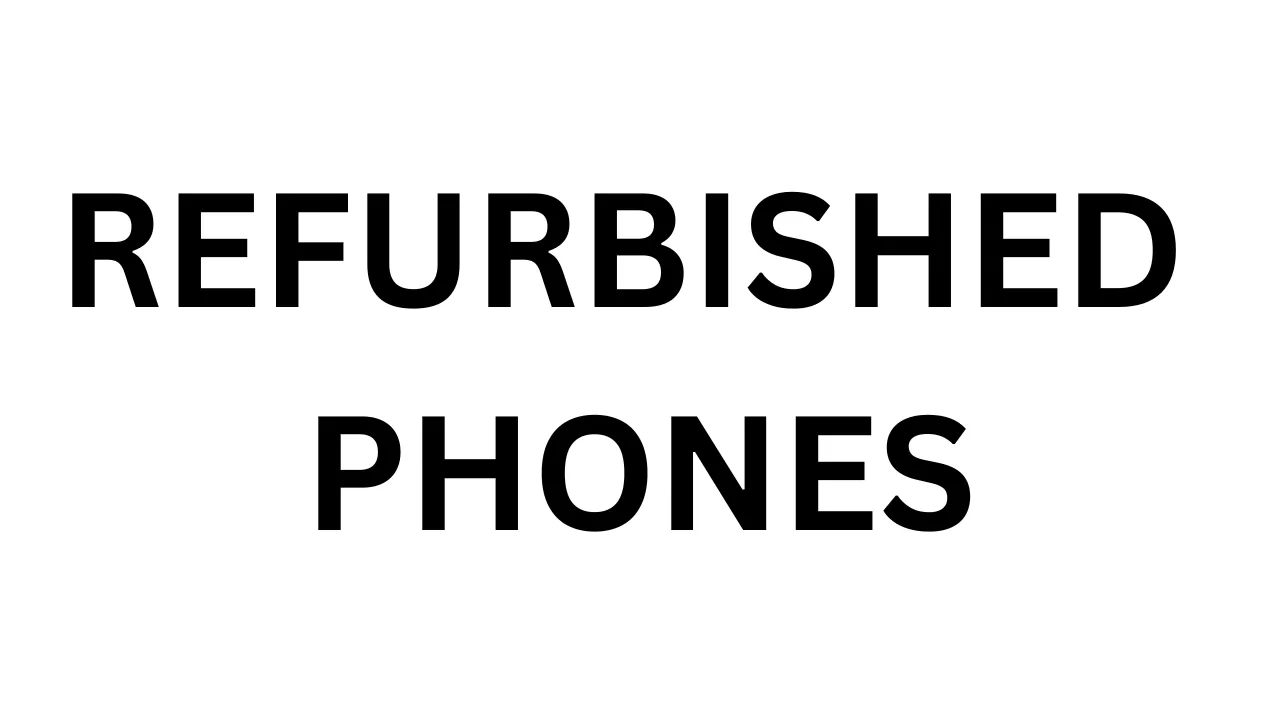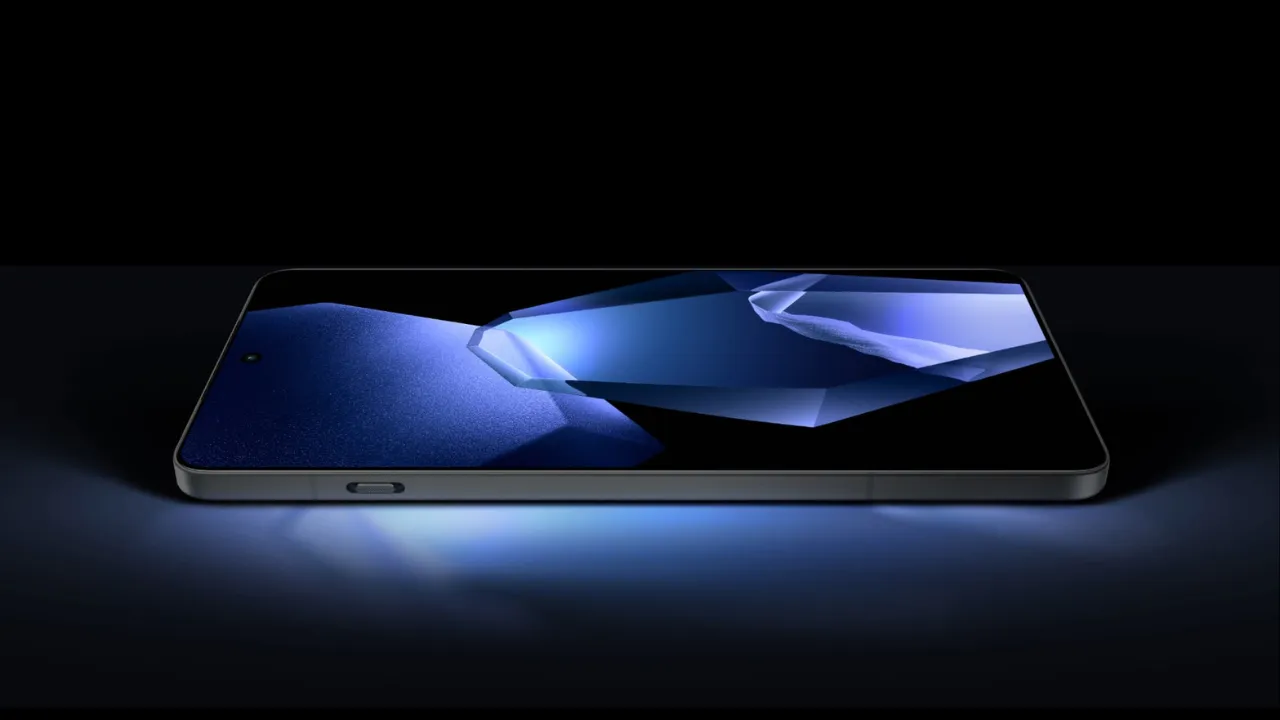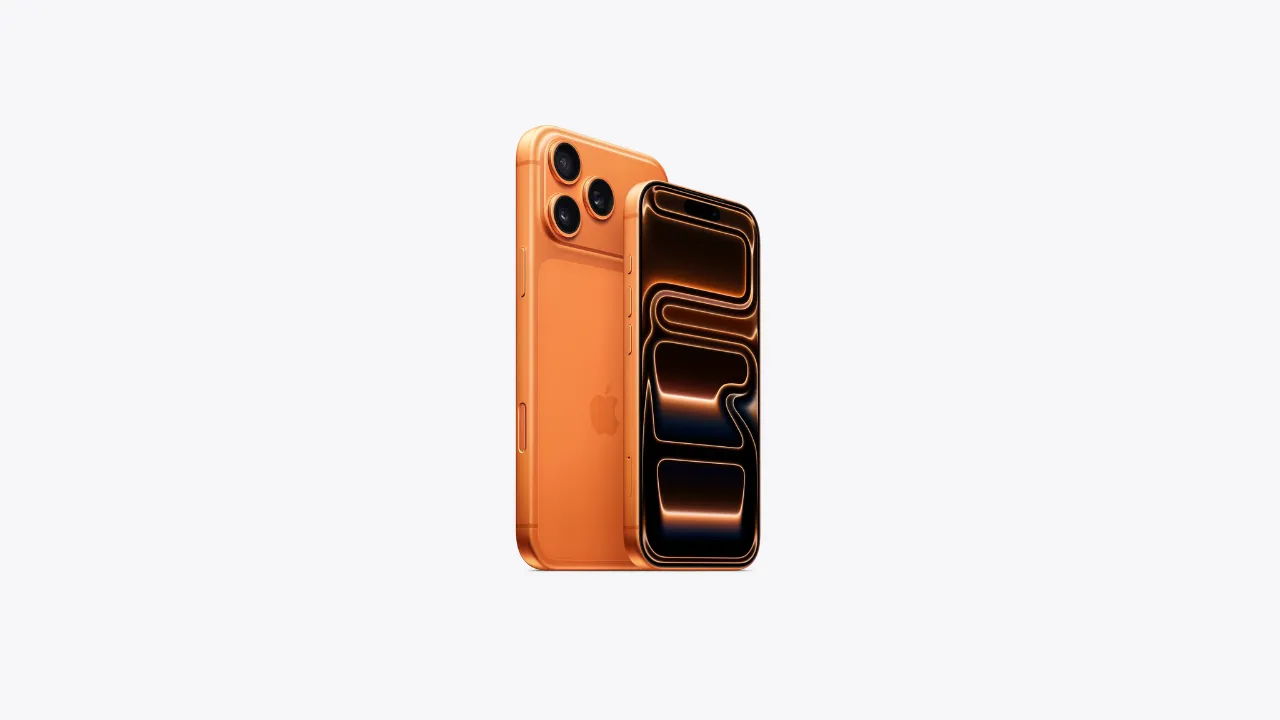Introduction – Why Refurbished Phones Are Trending in 2025
In 2025, smartphone prices have reached an all-time high, and users are becoming more value-conscious than ever. As flagship devices now cost upwards of ₹80,000 to ₹1,50,000, many people are looking for smarter ways to own premium phones without spending a fortune. That’s where refurbished phones are gaining massive popularity, especially in price-sensitive markets like India.
Unlike second-hand devices sold casually between users, refurbished phones go through a full quality check, repair, and certification process before being sold again—often with a limited warranty. This gives buyers confidence that they’re getting a fully functional device at a fraction of the original price. In 2025, platforms like Amazon Renewed, Cashify, and Flipkart Refurbished have made it easier and more trustworthy to buy certified refurbished smartphones online.
Another reason for this growing trend is environmental awareness. More consumers are realizing that choosing a refurbished phone helps reduce electronic waste and supports a more sustainable tech lifestyle. Instead of upgrading to a new device every year, many are opting for slightly older, premium models that still offer flagship-level performance.
From iPhones to Galaxy flagships, refurbished phones now offer solid specs, great cameras, and clean software—all without the hefty price tag. For budget-savvy buyers, students, and eco-conscious users, the refurbished phone market in 2025 presents an attractive middle ground between quality and cost.
What Is a Refurbished Phone? How Is It Different from Used?
A refurbished phone is a pre-owned smartphone that has been returned to the seller or manufacturer due to a defect, customer return, or exchange—and then repaired, tested, cleaned, and certified before being sold again. Unlike a used phone, which is sold as-is by the previous owner, a refurbished phone undergoes a quality control process to ensure it works like new.
The biggest difference between refurbished and used phones lies in their condition and reliability. Used phones may have visible wear and tear, battery degradation, or hidden issues, and they often come without any warranty. On the other hand, refurbished phones are restored to near-original condition and usually come with at least a 6-month warranty, making them a much safer option for buyers.
In India, platforms like Amazon Renewed, Flipkart Refurbished, and Cashify sell refurbished phones that are inspected by professionals. These phones are often graded as “like new,” “very good,” or “good,” depending on minor cosmetic flaws, but their internal performance is tested thoroughly.
If you’re on a budget but still want the performance of a flagship smartphone, buying a refurbished phone in 2025 can be a smart choice. It gives you access to premium features at a significantly lower price—without the usual risks of buying a used device directly from an individual seller.
How Refurbished Phones Are Tested, Repaired & Certified
When a refurbished phone reaches a certified seller or manufacturer, it doesn’t go straight back on the shelf. It first undergoes a detailed inspection, repair, and certification process to ensure it meets specific performance and quality standards. This process separates refurbished phones from random second-hand devices sold on online marketplaces or by individuals.
The first step is diagnostic testing. Trained technicians run software and hardware checks to identify issues with the display, battery, charging port, speakers, cameras, connectivity (Wi-Fi, Bluetooth), and internal sensors. If any faults are detected, they are repaired using original or high-quality compatible parts.
Next comes battery testing. If the battery health is below an acceptable threshold (usually under 80–85%), it is replaced to ensure the device can perform reliably. Some sellers even replace the battery by default, especially for older models.
Cosmetic evaluation is also important. Devices with scratches, dents, or faded bodies may receive new panels, buttons, or polishing. Based on this, phones are usually graded as “Like New,” “Very Good,” or “Good” condition for transparency.
Finally, after passing all quality checks, the phone is certified as refurbished and reset to factory settings. Most certified refurbished phones come with a warranty (typically 6 to 12 months) and support return policies.
This comprehensive process makes refurbished phones in 2025 a reliable and cost-effective alternative to buying new, offering both quality and peace of mind.
Top Benefits of Buying a Refurbished Phone in 2025
In 2025, the demand for refurbished phones is rising fast—and for good reason. As new smartphone prices climb higher each year, more people are realizing that they can get similar performance, premium features, and peace of mind by choosing refurbished over brand-new. If you’re still unsure, here are the top benefits of buying a refurbished phone in 2025:
1. Big Savings on Flagship Features
One of the biggest reasons people choose refurbished phones is the price. You can often save 30–60% compared to the original retail price of the same model. This means you could own a former flagship like the iPhone 13 Pro or Galaxy S22 Ultra for the price of a new budget phone—without compromising on performance.
2. Certified Quality and Warranty
Unlike used phones sold directly by individuals, certified refurbished phones are thoroughly tested, repaired if needed, and inspected for quality. They’re also cleaned, updated, and reset to factory settings. Most reputable sellers—like Amazon Renewed or Cashify—offer a 6–12 month warranty, so you get protection just like a new device.
3. Environmentally Friendly Choice
Buying a refurbished phone helps reduce e-waste, which is a growing environmental concern. Every refurbished device sold is one less new phone that needs to be manufactured. So, if you care about sustainability and the environment, refurbished is a smarter and greener option.
4. Fully Unlocked and Tested
Refurbished phones are usually sold unlocked, meaning they can work with any SIM card. They’re tested for all major functions—battery life, camera, screen sensitivity, charging, and network performance—before being approved for resale.
5. Ideal for Budget-Conscious Users, Students & Backup Phones
Refurbished phones are perfect for students, first-time users, or anyone who needs a secondary device. They’re also great for gifting or for use as backup phones, especially when you want something reliable but don’t want to spend a fortune.
6. Minimal Performance Compromise
In 2025, smartphones age slower than before. A 2–3-year-old flagship still performs better than many new mid-range phones. That makes refurbished devices a smart buy for performance seekers on a budget.
Major Drawbacks You Should Know Before Buying
While buying a refurbished phone in 2025 can save you money and offer good performance, it’s not always a perfect solution. Before you make a purchase, it’s important to understand the potential downsides so you can make an informed decision. Here are some of the key drawbacks to consider:
1. Limited Warranty and Support
Most refurbished phones come with a shorter warranty period—typically 6 to 12 months—compared to brand-new phones that offer up to 2 years of manufacturer warranty. Some sellers may also offer limited return policies or no support at all, especially in the case of uncertified or third-party resellers.
2. Possible Cosmetic Wear and Tear
Even if a refurbished phone is fully functional, it may have minor scratches, dents, or scuffs. These cosmetic flaws don’t affect performance, but if you’re expecting a “like-new” appearance, it’s important to check the condition grade (like “Good”, “Very Good”, or “Like New”) before buying.
3. Battery Health May Be Lower
Batteries degrade over time, and while some refurbished phones come with replaced batteries, not all do. That means you might get a phone with only 80–85% battery health, which could require more frequent charging. Always check if the battery has been replaced or tested.
4. Outdated Software or No Updates
Older refurbished phones may not receive regular software or security updates, especially if the original manufacturer has ended support. This can affect performance, app compatibility, and security over time. Buying a model that’s at least within the last 2–3 years is a safer bet.
5. Fake or Low-Quality Parts (From Untrusted Sellers)
Refurbished phones sold by unverified sellers can include low-quality or non-original parts. This can impact performance, display quality, and even long-term durability. Always buy from trusted platforms like Amazon Renewed, Flipkart Refurbished, or Cashify.
6. Resale Value Is Lower
A refurbished phone is already a resale product. If you plan to upgrade again in the future, the resale value will be lower than if you had bought a brand-new device.
Refurbished vs Second-Hand vs New – What Should You Choose?
When buying a smartphone in 2025, you’re not limited to just new models. The market offers three main choices: refurbished, second-hand, and brand-new phones. Each option has its own pros, cons, and ideal use cases. Let’s compare them side by side so you can decide what’s right for you.
1. New Phones – Peace of Mind with a Premium Price
A new phone is factory-fresh, comes with full manufacturer warranty (typically 1–2 years), and offers the latest hardware, software, and long-term support. You also get guaranteed unopened packaging, zero usage, and full after-sales service.
Ideal for: Users who want the latest features, plan to keep their phone for years, or prioritize warranty and resale value.
Downside: Often expensive, especially with flagship models costing ₹80,000 or more.
2. Refurbished Phones – Certified, Tested, and Budget-Friendly
A refurbished phone is a pre-owned device that has been professionally repaired, cleaned, tested, and certified before resale. It usually comes with a 6–12 month warranty and is sold through trusted platforms like Amazon Renewed, Flipkart Refurbished, or Cashify.
Ideal for: Budget-conscious buyers, students, or anyone wanting premium features at a lower price without the risks of a second-hand deal.
Downside: May have minor cosmetic wear, slightly older hardware, and shorter warranty periods than new devices.
3. Second-Hand Phones – Cheapest, But Risky
A second-hand phone is usually sold by individuals on platforms like OLX or Facebook Marketplace. These phones are used “as-is,” with no testing, repairs, or certification. They may or may not come with accessories, bills, or warranty.
Ideal for: Extremely budget-tight buyers or those needing a temporary phone.
Downside: High risk of hidden issues, no warranty, and zero accountability after the sale.
Verdict – What Should You Choose?
If you want full reliability and future-proofing, go for a new phone. If you want premium performance at a budget, a refurbished phone is the sweet spot. Avoid second-hand phones unless you’re tech-savvy and can test them thoroughly.
Where to Buy Trusted Refurbished Phones in India (2025)
In 2025, the demand for refurbished phones in India has led to the rise of several reliable platforms that specialize in certified, quality-tested smartphones. But not all sellers are trustworthy. If you’re planning to buy a refurbished phone, it’s important to choose a verified platform that offers warranty, return options, and quality assurance. Here are the top trusted sources:
1. Amazon Renewed
Amazon’s dedicated refurbished program, Amazon Renewed, offers a wide range of refurbished phones that are professionally inspected, tested, and certified. Every product comes with a 6-month seller warranty and a hassle-free return policy. You also get detailed condition grading—like “Good”, “Very Good”, or “Like New”.
Why choose it:
- Trusted seller network
- Easy returns
- Amazon-backed customer support
2. Flipkart Refurbished (2GUD)
Flipkart operates its own refurbished section called 2GUD, offering smartphones with certified quality checks and up to 12-month warranty. It’s known for offering competitive prices and brand-certified refurb units.
Why choose it:
- Warranty coverage up to 1 year
- Flipkart trust & reach
- Often includes accessories
3. Cashify Store
Cashify is one of India’s leading platforms for buying and selling used or refurbished phones. It runs its own refurbishment centers and offers devices that are tested on 32+ quality points. Most phones come with a 6-month warranty and a 15-day replacement policy.
Why choose it:
- Expert testing and in-house repair
- Transparent pricing and EMI options
- Pickup and doorstep delivery available
4. Togofogo / Yaantra (Now Part of Flipkart Group)
These platforms are known for selling budget refurbished phones with warranty and certification. They’re now merged into larger platforms but still operate with their own inventory under Flipkart’s refurbished category.
Bonus Tip:
Avoid buying from random online sellers, social media, or local shops without certification. Always check for warranty, product grade, invoice, and return policy.
Refurbished phones are a smart buy—but only when purchased from reputable platforms. Stick to trusted sources, and you’ll enjoy premium features without the premium price.
Red Flags to Watch Out for While Buying Refurbished
Buying a refurbished phone in 2025 can be a smart financial move—but only if you know what to avoid. The market is full of both trusted sellers and shady dealers, and one wrong purchase can leave you with a defective or poorly restored device. Here are some common red flags to watch out for before you hit that “Buy Now” button:
1. No Warranty or Return Policy
If a seller isn’t offering any warranty, even a 3–6 month one, it’s a major warning sign. Trusted refurbished phones always come with some level of warranty and easy return options. No warranty = no accountability.
2. No Mention of Grading or Testing
Refurbished phones are usually sold under condition grades like “Like New,” “Very Good,” or “Good.” If the listing doesn’t specify the phone’s physical and functional condition, it may be a second-hand phone passed off as refurbished. Always buy only when grading and testing process is clearly stated.
3. Unusually Low Price
If the price seems too good to be true, it probably is. Phones listed at abnormally low prices often come with hidden issues like non-original parts, weak batteries, or poor performance. Compare prices across multiple trusted platforms before deciding.
4. Missing Accessories or IMEI Info
Refurbished phones should come with verified IMEI numbers, a valid invoice, and at least essential accessories like a charger. Missing IMEI details could mean the phone is stolen, blacklisted, or not eligible for future updates or repairs.
5. No Trusted Platform or Seller Rating
Avoid sellers without verified reviews or ratings. Always buy from platforms like Amazon Renewed, Flipkart, Cashify, or certified offline resellers. Unknown websites or Instagram shops selling cheap phones with no background check can be risky.
6. Locked or Region-Specific Devices
Some refurbished phones, especially iPhones, might be carrier-locked or region-locked. This can limit functionality or even prevent usage on Indian networks. Always confirm that the device is unlocked and works with all SIMs.
Buying refurbished is smart, but don’t skip your homework. Stay alert, stick with trusted sellers, and avoid shortcuts that could cost you later.
Who Should Consider Buying a Refurbished Phone?
In 2025, the refurbished phone market has matured into a smart and safe choice—but it’s not for everyone. While it offers impressive value and sustainability, certain users benefit more from buying refurbished than others. Here’s a clear look at who should seriously consider it, and why:
1. Budget-Conscious Buyers
If you want a premium phone but can’t justify spending ₹70,000 or more, a refurbished phone offers flagship-level specs at mid-range prices. Whether it’s an iPhone 13 Pro or a Galaxy S22 Ultra, refurbished units can save you 30–60% off the original price without sacrificing core features.
2. Students & First-Time Smartphone Users
Students, especially those in college or higher secondary, often need powerful devices for studies, video calls, and content creation—but have limited budgets. A refurbished phone is a great middle ground between performance and affordability. It’s also ideal for teenagers or first-time users who may not handle devices carefully.
3. Professionals Needing a Secondary Phone
Many business users or professionals like to keep a secondary device for work SIMs, travel, or testing apps. A refurbished phone is perfect for this use case—it’s cheaper, reliable, and doesn’t hurt the pocket if lost or damaged.
4. Eco-Conscious Consumers
More buyers in 2025 are considering the environmental impact of electronics. Refurbished phones help reduce e-waste and lower the demand for raw materials. If you’re someone who values sustainability, choosing refurbished over new is a responsible decision.
5. Frequent Upgraders Who Want Flagship Features Without Full Cost
If you’re someone who loves to switch phones every 1–2 years, refurbished phones let you enjoy high-end models without the massive upfront cost. You’ll lose less on resale since you didn’t buy new in the first place.
When Not to Buy Refurbished?
If you need the absolute latest features, long-term software support, or the security of full warranty, a brand-new phone might be better. Also, if you’re not buying from a trusted seller, it’s better to wait.
Expert Opinion – Are Refurbished Phones Worth It Today?
With the smartphone market maturing and prices rising every year, many tech experts in 2025 believe that refurbished phones are no longer a second-tier option—they’re a smart, strategic purchase for a growing number of users.
According to analysts and tech reviewers, the quality of refurbished devices has improved drastically in the last few years. Unlike in the past, where “refurbished” often meant uncertain quality and no support, today’s certified refurbished phones from platforms like Amazon Renewed, Cashify, and Flipkart go through rigorous multi-point testing, come with a limited warranty, and are backed by return policies.
What the Experts Say:
- Performance Isn’t the Issue: Experts agree that smartphones have become so powerful that even devices from 2–3 years ago still offer excellent performance for most users. That makes refurbished phones—especially flagships—still very relevant and fast.
- Battery & Updates Are the Real Considerations: Tech reviewers often point out that the only major drawbacks are battery health and software update timelines. However, many refurbished phones now come with replaced batteries and can still receive updates for another year or two—making them a safe bet for short- to mid-term use.
- Refurbished Beats Mid-Range: Many experts argue that a refurbished flagship (like a used iPhone 13 or Samsung S22) is better than a brand-new mid-range phone, both in terms of build quality and performance.
- Eco-Benefits Are Underrated: Tech environmentalists also highlight the sustainability angle. By buying refurbished, users directly reduce e-waste and the environmental footprint caused by manufacturing new devices.
The Final Word:
In 2025, refurbished phones are absolutely worth it—if you buy them from trusted platforms, verify the condition and warranty, and choose a model that still receives software support. Experts unanimously agree: if your goal is value for money, reliable performance, and sustainability, refurbished phones are no longer a compromise—they’re a smart tech choice.
Final Verdict – Should You Buy One or Not in 2025?
So, after looking at the facts, pros, cons, and expert advice—should you buy a refurbished phone in 2025? The answer depends on your needs, budget, and expectations, but for most people, the answer is a confident yes.
Refurbished phones have come a long way. They are no longer just “second-hand” devices sold with hidden issues. Today’s certified refurbished phones are professionally tested, repaired, cleaned, and repackaged to meet high-quality standards. With the rising costs of brand-new flagship phones, refurbished options give you the best of both worlds—premium specs at budget-friendly prices.
If you’re someone who wants top-tier performance, solid cameras, and good design—but doesn’t care about owning the latest model on day one—then a refurbished phone is a smart financial decision. You can easily save ₹15,000 to ₹40,000 compared to buying the same device new, without sacrificing much in terms of everyday performance.
It’s also a great choice if:
- You’re a student or first-time smartphone user
- You need a reliable secondary device
- You prefer a sustainable, environment-friendly option
- You want flagship features without paying flagship prices
However, it’s important to stay cautious. Don’t fall for deals that seem too cheap or come from unverified sellers. Always buy from trusted platforms like Amazon Renewed, Flipkart Refurbished, or Cashify. And remember to check warranty terms, battery condition, and return policies before placing your order.
Refurbished phones may not be the right choice for:
- Gamers or creators who need the latest processing power
- Users who plan to keep the phone for 4–5 years
- Those who prioritize 2+ years of guaranteed OS updates
Bottom Line:
If you’re a smart buyer who values performance and savings more than shiny new boxes, a refurbished phone in 2025 is absolutely worth it—and might just be the most underrated purchase decision you’ll make this year.
Also Read: Best Foldable Phones in 2025 – Are They Worth the Hype?
FAQs – Refurbished Phone Buying Questions Answered
Q1. Is it safe to buy a refurbished phone in 2025?
Yes, as long as you buy from a trusted seller or platform like Amazon Renewed, Flipkart Refurbished, or Cashify. These sellers test, repair, and certify the phones, and usually offer a 6 to 12-month warranty.
Q2. What is the difference between refurbished and second-hand?
Refurbished phones are professionally repaired, tested, and cleaned, often with warranty and return options. Second-hand phones are sold as-is by individual users, with no testing or guarantee.
Q3. Do refurbished phones come with a warranty?
Most certified refurbished phones come with a 6-month to 1-year warranty. Avoid buying from sellers who don’t offer any warranty or return policy.
Q4. Will I get original accessories with a refurbished phone?
Not always. Some sellers include compatible (non-original) accessories, while others might bundle original ones. Always check the product listing for accessory details before buying.
Q5. Is the battery of a refurbished phone reliable?
It depends on the seller. Trusted platforms usually ensure the battery has at least 80% health, and some even replace it. Always check if battery testing or replacement is part of the refurbishment process.
Q6. Can I get software updates on a refurbished phone?
Yes—if the model is still supported by the manufacturer. Refurbished phones aren’t limited in updates, but older models may stop receiving new versions soon. Check update eligibility before purchase.
Q7. Is it better to buy a refurbished flagship or a new mid-range phone?
In most cases, a refurbished flagship offers better performance, camera quality, and overall experience than a new mid-range phone—at a similar price.
Q8. Can I return a refurbished phone if I don’t like it?
Most platforms offer a 7 to 15-day return or replacement window, but this depends on the seller’s policy. Always read the return terms carefully.













